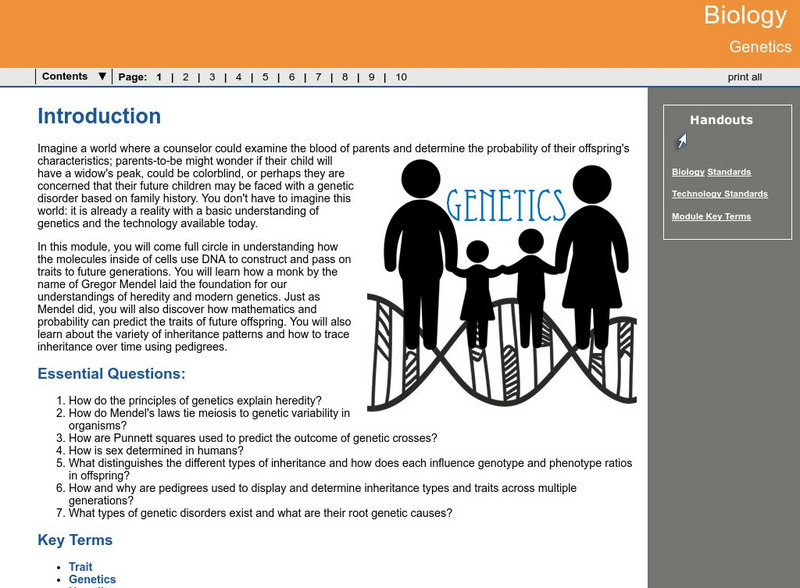Curated OER
Social Studies: Personality Development
Pupils investigate the development and influence of personalities on individuals. After examining a kaleidoscope, they discuss how people's personalities are analogous to the instrument's different designs. The lesson concludes with...
Concord Consortium
Biologica: Web Lab, Mendel's Peas
At this site see an online visual of meiosis, fertilization, and inheritance and play a game.
Georgia Department of Education
Ga Virtual Learning: Biology: Genetics
Through informational text, interactive activities, practice problems, and video clips, students analyze how biological traits are passed on to successive generations.
PBS
Pbs Learning Media: Gila Monster
This video segment from Outdoor Nevada looks at the Gila monster's behavior, habitat, and unique adaptive characteristics. [3:55]
The Wonder of Science
The Wonder of Science: 3 Ls3 1: Inheritance and Variation of Traits
Work samples, phenomena, assessment templates, and videos that directly address standard 3-LS3-1: inheritance and variation of traits.
Other
Lawrence Livermore National Lab: Probabilities of Traits
This site explains how to determine the chances of inheriting certain traits from our parents. It gives mathematical examples and exercises.
Other
Simply Psychology: Saul Mc Leod: Nature vs. Nurture in Psychology
There are five approaches to psychology which are on a spectrum from nature versus nurture. The approaches with inherited traits lean towards the nature end and those with acquired traits are on the nurture end. This article helps...
Other
March of Dimes Medical Reference: Tay Sachs Disease
The March of Dimes Foundation offers a general overview of Tay-Sachs disease and how it is transmitted, carried, and treated.
CK-12 Foundation
Ck 12: Life Science: 3.3 Punnett Squares
See how a Punnett square is a special tool used to predict the offspring from a cross, or mating between two parents.
Other
Nurture Is Not the Same as Environment
Excerpt from book by Judith Harris which argues that parents do not have as much influence as peers in child development.







